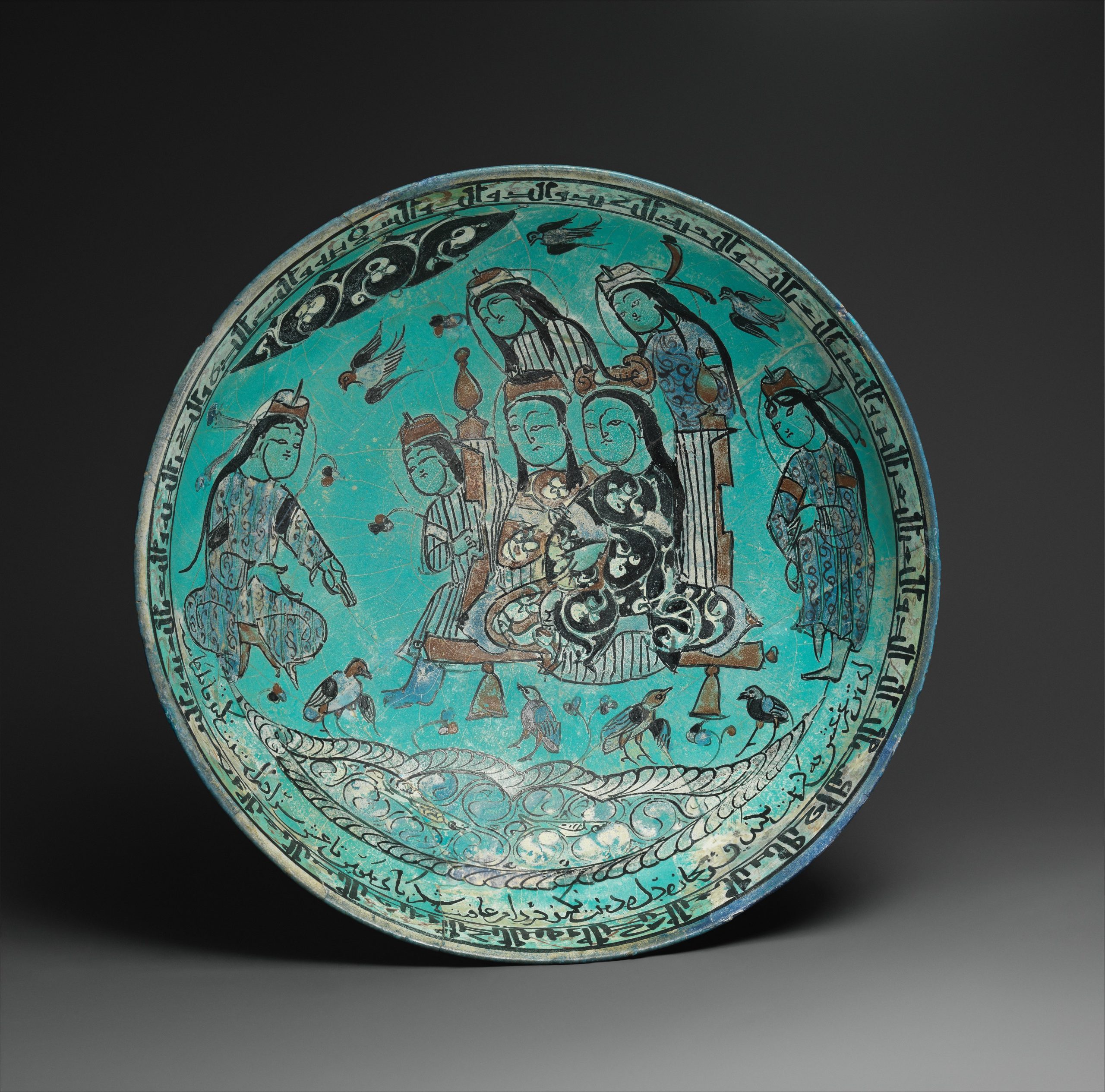A Bowl, A Story
Seljuq Fritware and the Art of Cultural Convergence
At first glance, it is only a bowl—pale ceramic, painted with seated figures and a line of Persian verse. Yet this vessel, made in 1186 by the potter-poet Abu Zayd al-Kashani, records a moment of invention and exchange that reshaped the history of ceramics.


It was produced in Kashan, Iran, from fritware, a new material devised to answer a problem that came from afar. Persian potters admired the whiteness of Chinese porcelain but lacked kaolin, the mineral that gave porcelain its translucence and strength. Their solution was to grind quartz and glass with fine clay to create a bright, resilient body that could take high heat and painted detail. What emerged was not a copy but a new medium—born from contact with imported porcelain and refined through local experimentation.
Over this engineered surface, Abu Zayd painted with mina’i, an overglaze enamel technique that allowed intense color. In cobalt, turquoise, black, and red, a poet recites while his companions listen. Around the rim, blessings flow in elegant script. Abu Zayd’s name appears among them. He was both maker and author, a craftsman who saw poetry and clay as parts of the same art.
The materials tell their own story of movement. Iranian cobalt, used here for its deep blue, would later travel east and define Chinese blue-and-white porcelain. Exchange was never one-way. Ideas and pigments moved through Kashan, Baghdad, Damascus, and Cairo, carried by merchants and courtly demand. The bowl embodies this traffic of technique and taste, a record of dialogue conducted through material.
Seen now in the galleries of The Met, the piece still feels intimate: a handmade solution to a global curiosity. It reminds us that technical breakthroughs often begin as acts of response—artisans adapting what arrives from elsewhere to the realities of their own soil and resources.
For Iaia Caravan, such objects remain guides. They show how innovation grows out of contact, how making becomes a form of translation. When we hammer, cast, or set gold, we work within that same conversation, tracing the routes through which knowledge survives.
This bowl, signed by a single hand eight centuries ago, holds evidence of a world already connected by craft. Its surface preserves the gestures of a maker who looked outward, learned, and left a trace that still speaks.